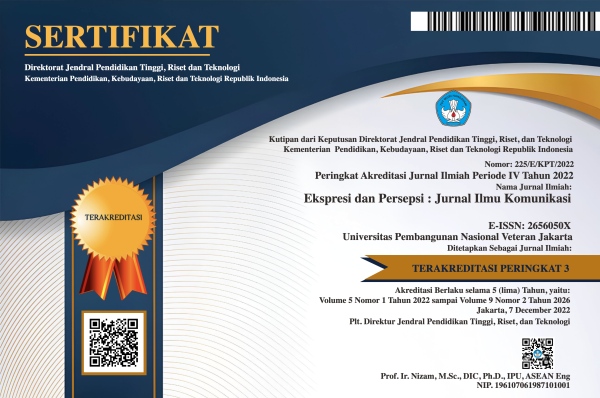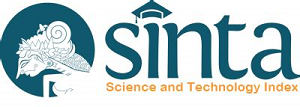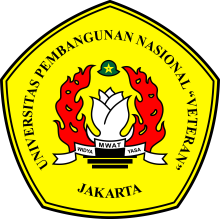MAPPING OF SUSTAINABLE DEVELOPMENT IN INDONESIA THROUGH EDUCATION FOR SUSTAINABLE DEVELOPMENT
DOI:
https://doi.org/10.33822/jep.v6i3.6484Keywords:
mapping; SDGs; eduaction for sustainable developmentAbstract
Universities struggle with interdisciplinary education for sustainable development. SDG 4.7 promotes sustainable development education to develop leaders. Sustainable development includes economic prosperity, equitable resource distribution, energy use, health and environmental awareness, and global environmental issues like climate change, biodiversity loss, poverty, etc. Permata Sari students' CSR and community development are assessed. Local SDG 2030 implementation maps diverse development issues. There are 33 Indonesian university students participate in Permata Sari online student exchange. Concept mapping enhances learning, thinking, and action. Fieldwork requires observation and data collection. Adult learning theory and content/situation analysis are used. Experiential learning is mandatory for students. Students observe local development issues and use problem-solving theory to solve them. student-environment interaction. Students' observations, interviews, and other data promote campus sustainability. Indonesian province concept maps summarize the findings. This course encourages sustainability. Sustainable development education on Indonesian campuses uses issue mapping to develop the concept map.
References
Avonanova. (2012). Indonesia Tercatat sebagai Perusak Hutan Tercepat di Dunia. http:// blogs.itb.ac.id/igist/2012/06/19/indonesia-tercatat-sebagai-perusak-hutan-tercepat-di-
Baker, M. A., & Robinson, J. S. (2016). The Effects of Kolb’s Experiential Learning Model on Successful Intelligence in Secondary Agriculture Students. Journal of Agricultural Education, 57(3), 129–144.
Boggu, A. T., & Sundarsingh, J. (2016). The Impact of Experiential Learning Cycle on Language Learning Strategies. International Journal of English Language Teaching, 4(10), 24–41.
Bozoglu, J., Dos, A., Aires, S., Caldeira, F., & Borem, B. (2016). COLLABORATION WITH BIM : AN EXPERIENTIAL LEARNING CASE (Vol. 124, pp. 92–101).
Chan, C. (2012). Exploring an experiential learning project through Kolb’s Learning Theory using a qualitative research method. European Journal of Engineering Education. https://doi.org/10.1080/03043797.2012.706596
Eveline, E. O., Kärkkäinen, S., Keinonen, T., & Anyolo, O. (2018). Implementing Education for Sustainable Development in Namibia: School Teachersí Perceptions and Teaching Practices. Journal of Teacher Education for Sustainability, 20(1), 64-81,.
GHK :Danish Technology Institute Technopolis. (2008). Inventory of innovative practices in education for sustainable development. Sustainable Development, 99.
Iliško, D., & Yelena Badyanova, Y. (2014). A Case Study of ESD Implementation:Signs of Sustainable Leadership. Discourse and Communication for Sustainable Education,vol, 5, 38–48.
Kemp, S. (2011). Embedding experiential learning into the curriculum and linking to extra-curricular activities.
Manolas, E., & Littledyke, M. (2010). Enriching understanding and promoting responsible behaviour to combat climate change: A case study involving the use of Kolb’s experiential learning model. Proceedings of HSci2010, the 7th International Conference Hands-on Science. Bridging the Science and Society Gap, 131–137. https://www.researchgate.net/profile/Ioannis_Starakis/publication/268520450_Distance_dependence_or_Angle_of_sun_rays_Incidence_dependence_The_Design_of_an_Experimental_Device_for_teaching_about_Seasonal_Change/links/546f48760cf24af340c0809d/Distance-depen
Novak, J. D. (2009). Learning creating and using knowledge: Concept maps as facilitative tools in schools and corporations: Second edition. Learning Creating and Using Knowledge: Concept Maps as Facilitative Tools in Schools and Corporations: Second Edition, 6(September 2010), 1–317. https://doi.org/10.4324/9780203862001
Novak, J. D., & Gowin, D. B. (1984). Learning how to learn. Cambridge University Press. https://doi.org/10.1017/CBO9781139173469
Quesada-Pineda, H. J., & Haviarova, E. (2014). Incorporating Experiential Learning and Education for Sustainable Development into Study Abroad Programs. Natural Sciences Education, 43(1), 127–136. https://doi.org/10.4195/nse2014.04.0010
Ssossé, Q., Wagner, J., & Hopper, C. (2021). Assessing the Impact of ESD: Methods, Challenges, Results. Sustainability, 13, 2854. https://doi.org/10.3390/su13052854
Tomaškinová, J., & Tomaškin, J. (2018). Cross-cultural experiential learning during the short-term non-formal educational activity. World Sustainability Series, 809988, 129–141. https://doi.org/10.1007/978-3-319-63534-7_9
UNESCO. (2005). International implementation scheme and UNESCO. Contribution to the implementation of Decade. UNESCO.
UNESCO. (2006). Education for sustainable development toolkit. UNESCO.
UNESCO. (2010). Education for sustainable development. http://unesco.org/en/esd/
Voukelatou, G. (2019). The Contribution of Experiential Learning to the Development of Cognitive and Social Skills in Secondary Education: A Case Study. Education Sciences, 9, 127. https://doi.org/10.3390/educsci9020127
Downloads
Published
Issue
Section
License
Copyright (c) 2023 Yani hendrayani

This work is licensed under a Creative Commons Attribution-NonCommercial 4.0 International License.














